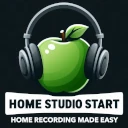Are you ready to elevate your podcast game and captivate your audience with impeccable audio quality? You’re in the right place! Welcome to our ultimate guide on the top podcasting microphones for 2025. Whether you’re a seasoned pro or just starting your podcasting journey, choosing the right microphone can make all the difference in delivering a professional, engaging show.
High-quality audio is the cornerstone of a successful podcast. The microphone you choose plays a pivotal role in capturing your voice clearly and professionally. Listeners have high expectations for sound quality, and poor audio can turn them away, regardless of your content’s brilliance. Investing in a good microphone enhances your voice, minimizes background noise, and creates a more immersive experience for your audience.
There are various types of microphones designed to meet different needs and recording environments. Dynamic microphones are robust and excellent for noisy settings, while condenser microphones offer sensitivity and detail, ideal for studio use. USB microphones are perfect for beginners due to their ease of use, and ribbon microphones provide a unique vintage sound, appealing to experienced podcasters seeking a distinct audio aesthetic.
Understanding the strengths and weaknesses of each type will help you make an informed decision tailored to your podcasting needs. Selecting the right microphone is about finding the balance between your budget, technical requirements, and the recording environment.
In the following sections, we’ll dive deeper into the specifics of each microphone type, their key features, and top recommendations for 2025. Whether you’re upgrading your setup or starting from scratch, this guide will help you make the best choice for achieving professional audio quality. Let’s get started and discover the microphone that will take your podcast to the next level!
Understanding Microphone Types
Selecting the right microphone for your podcast is essential for achieving high-quality audio. Here’s a detailed look at the main types of microphones and their unique features:
Dynamic Microphones
Dynamic microphones are durable and versatile, making them a popular choice for podcasters, especially those recording in noisy or uncontrolled environments. These mics are less sensitive to background noise and handle high sound pressure levels well. Their robustness makes them ideal for live settings or home studios where there might be ambient noise. The Shure SM7B is a renowned dynamic microphone, praised for its reliability and rich sound quality.
Condenser Microphones
Condenser microphones are known for their sensitivity and accuracy, capturing a wider range of frequencies and more detail than dynamic microphones. They are ideal for studio recordings where clarity and detail are paramount. Condenser mics require a power source, usually provided by phantom power from an audio interface. The Rode NT1-A is a popular choice among podcasters for its clear and detailed sound, making it perfect for controlled recording environments.
USB Microphones
USB microphones are designed for ease of use, connecting directly to your computer without the need for additional equipment like audio interfaces. This plug-and-play capability makes them an excellent choice for beginners or those with limited technical knowledge. Despite their simplicity, many USB mics, such as the Blue Yeti, offer impressive audio quality and versatility with multiple polar patterns to choose from.
Ribbon Microphones
Ribbon microphones provide a unique, vintage sound, characterized by a warm and natural audio quality. They are less common in podcasting due to their fragility and higher cost, but they can add a distinct character to your recordings. These mics are often used by experienced podcasters looking for a specific sound aesthetic.
Choosing the Right Microphone
The best microphone for your podcast depends on various factors, including your recording environment, budget, and personal preferences. Dynamic microphones are great for noisy environments, while condenser microphones excel in quiet, controlled settings. USB microphones are perfect for beginners due to their simplicity, and ribbon microphones offer a unique sound for those seeking a specific audio character.
Key Features to Consider
When choosing a microphone for podcasting, several key features can significantly impact your audio quality and overall recording experience. Here’s a detailed look at the most important factors to consider:
Frequency Response
Frequency response refers to the range of frequencies a microphone can capture. A wider frequency response ensures that both low and high sounds are picked up accurately. For podcasting, a microphone that can capture the full range of human voice frequencies (typically 20 Hz to 20 kHz) is ideal. This ensures that your voice sounds natural and detailed.
Sensitivity and SPL
Sensitivity measures how well a microphone can pick up quiet sounds. Higher sensitivity is beneficial for capturing subtle nuances in your voice, especially in a controlled environment. Sound Pressure Level (SPL) handling, on the other hand, indicates how well a microphone can handle loud sounds without distorting. This is crucial if you have a dynamic speaking style or record in a lively environment.
Polar Patterns
The polar pattern of a microphone describes how it picks up sound from different directions:
– Cardioid: Picks up sound primarily from the front, ideal for isolating your voice from background noise.
– Omnidirectional: Captures sound equally from all directions, useful for roundtable discussions.
– Bidirectional: Picks up sound from the front and back, suitable for interviews.
For most podcasters, a cardioid pattern is preferable as it focuses on the speaker’s voice and minimizes ambient noise.
Connectivity Options
Microphones typically come with either USB or XLR connections:
– USB: Easy to set up, plug-and-play with computers, perfect for beginners.
– XLR: Professional quality, requires an audio interface or mixer, offers greater control and sound quality.
Consider your technical expertise and the level of audio quality you desire when choosing between USB and XLR.
Build Quality and Durability
A well-built microphone will withstand the rigors of frequent use and transportation. Look for robust construction materials and reliable brand reputations. A durable microphone ensures longevity and consistent performance.
Price and Value
While it’s tempting to go for the cheapest option, investing in a quality microphone can make a significant difference in your podcast’s sound quality. Balance your budget with the features and performance you need. Sometimes spending a bit more upfront can save you from frequent replacements and upgrades.
By understanding these key features, you can make an informed decision that best suits your podcasting needs. For more detailed advice on selecting the right microphone, visit our comprehensive microphone comparison guide.
Top Microphones for Podcasting in 2025
Choosing the right microphone is crucial for podcasting, as it directly affects your audio quality and listener experience. Here are some of the top microphones for podcasting in 2025, each known for their unique features and superior performance:
Shure SM7B
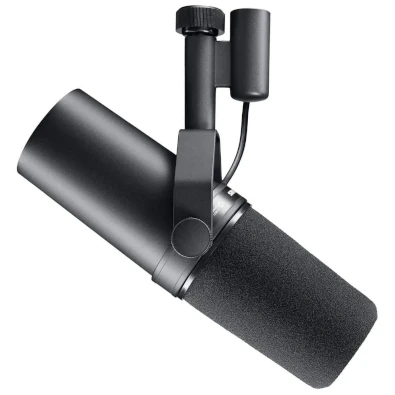
✅ Check Price on Amazon
As an Amazon Associate I earn from qualifying purchases.
The Shure SM7B is a dynamic microphone celebrated for its versatility and rich, warm sound. It’s an industry favorite for professional podcasters and broadcasters. Its excellent rejection of electromagnetic hum and its ability to handle loud sound sources make it ideal for recording in various environments. The built-in pop filter and air suspension shock isolation reduce mechanical noise, ensuring clean recordings.
Blue Yeti
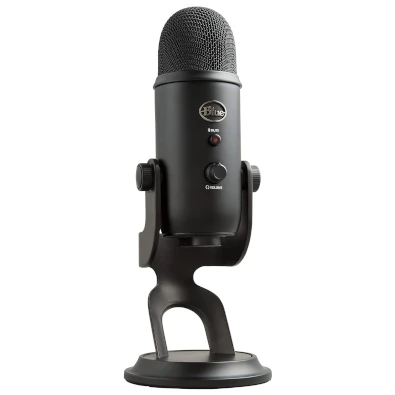
✅ Check Price on Amazon
As an Amazon Associate I earn from qualifying purchases.
The Blue Yeti is a highly popular USB microphone, known for its ease of use and exceptional audio quality. It features multiple polar patterns, including cardioid, bidirectional, omnidirectional, and stereo, making it versatile for different recording scenarios. Its plug-and-play functionality makes it a perfect choice for beginners and those who prefer a straightforward setup without compromising on sound quality.
Rode NT1-A
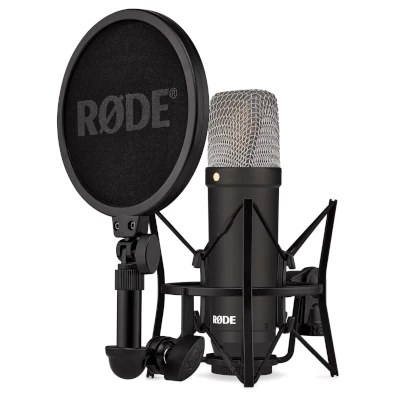
✅ Check Price on Amazon
As an Amazon Associate I earn from qualifying purchases.
The Rode NT1-A is a condenser microphone renowned for its low self-noise level and high sensitivity. It captures audio with incredible detail and clarity, making it perfect for studio recordings. The NT1-A is often praised for its warm and natural sound, and it comes with a complete recording solution, including a shock mount, pop filter, and XLR cable.
Audio-Technica AT2020
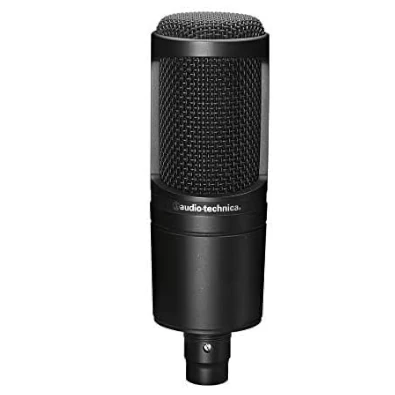
✅ Check Price on Amazon
As an Amazon Associate I earn from qualifying purchases.
The Audio-Technica AT2020 offers excellent value for money, combining affordability with professional-grade audio quality. This condenser microphone is known for its robust construction and ability to handle high SPLs, making it versatile for various recording environments. Its wide frequency response ensures that it captures the full range of vocal nuances, providing clear and accurate sound.
Samson Q2U
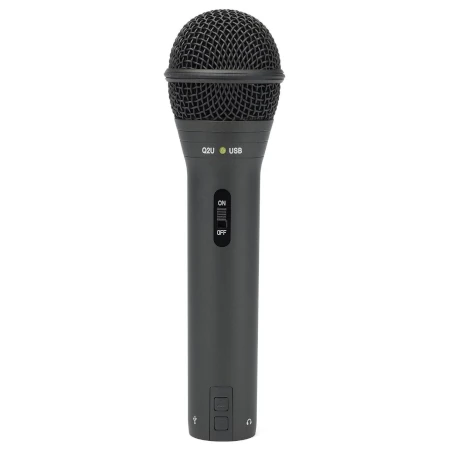
✅ Check Price on Amazon
As an Amazon Associate I earn from qualifying purchases.
The Samson Q2U is a dynamic USB/XLR microphone, offering the best of both worlds. It’s ideal for podcasters who want flexibility in their recording setups. The Q2U provides solid audio quality and is very user-friendly. It’s perfect for live events, studio recording, and mobile podcasting, making it a versatile choice for podcasters at any level.
These microphones are among the top choices for podcasters in 2025, each offering distinct advantages depending on your specific needs and budget. Investing in a quality microphone is essential for delivering professional-sounding audio to your audience.
Setting Up Your Podcast Microphone
Setting up your podcast microphone properly is crucial to ensure the best possible audio quality. Here are some essential steps and tips to get you started:
Positioning Your Microphone
The positioning of your microphone can significantly impact the sound quality. Place your microphone about 6-12 inches away from your mouth. This distance helps to capture your voice clearly while minimizing plosives (harsh “p” and “b” sounds). Angling the microphone slightly off-axis can also help reduce plosive sounds.
Using a Pop Filter
A pop filter is a simple yet effective tool that reduces plosive sounds and protects your microphone from moisture. Position the pop filter a few inches away from the microphone. This ensures that your voice remains clear and free of harsh sounds, providing a more pleasant listening experience for your audience.
Employing a Shock Mount
A shock mount isolates your microphone from vibrations that can travel through your mic stand or desk, which can cause unwanted noise. By using a shock mount, you can minimize these vibrations and ensure cleaner recordings. This is particularly important if you tend to move around or bump into your desk while recording.
Soundproofing Your Recording Space
Creating a soundproof recording space can drastically improve your audio quality. You don’t need a professional studio; simple adjustments can make a big difference. Use soft furnishings like rugs, curtains, and cushions to absorb sound. You can also use foam panels or even DIY solutions like hanging blankets to reduce echo and background noise.
Monitoring Your Audio
Use headphones to monitor your audio while recording. This allows you to hear exactly what’s being captured and make real-time adjustments to your setup or technique. Closed-back headphones are ideal as they prevent sound from leaking into the microphone.
Setting Gain Levels
Proper gain staging is crucial to avoid distortion and maintain audio clarity. Set your microphone’s gain level so that your voice peaks around -6dB on your recording software’s meter. This provides enough headroom to prevent clipping while ensuring your voice is loud enough.
Recording Environment
Choose a quiet environment for recording. Background noises from appliances, traffic, or other people can be distracting and reduce the quality of your podcast. Inform those around you when you’re recording to minimize interruptions.
For more detailed advice and step-by-step instructions, check out our home recording setup guide. Proper setup ensures that your podcast sounds professional, keeping your audience engaged and coming back for more.
Conclusion and Final Recommendations
Selecting the right microphone is a critical step in creating a successful podcast. Investing in quality equipment not only enhances your audio but also reflects your professionalism and commitment to your craft. Here are some final recommendations to guide you in making the best choice:
Recap of Microphone Types and Their Uses
– Dynamic Microphones: Ideal for noisy environments and live settings due to their durability and sound rejection capabilities.
– Condenser Microphones: Best suited for controlled studio environments, offering high sensitivity and capturing detailed sound.
– USB Microphones: Great for beginners and those seeking simplicity, offering plug-and-play convenience without sacrificing too much on audio quality.
– Ribbon Microphones: Perfect for experienced podcasters aiming for a unique, vintage sound, though they are more fragile and often pricier.
Final Thoughts on Key Features
Understanding key features such as frequency response, sensitivity, polar patterns, and connectivity options is crucial. These elements influence how well the microphone will perform in your specific recording environment and for your particular style of podcasting. Investing time in researching and comparing these features will pay off in the long run, ensuring you choose a microphone that meets your needs.
While it might be tempting to start with cheaper equipment, investing in a high-quality microphone can significantly improve your podcast’s audio quality. This investment not only enhances your listener’s experience but also establishes your podcast as a professional and credible source of content.
By choosing the right microphone and following best practices for setup and use, you’ll be well on your way to producing a podcast that sounds professional and engaging. For more in-depth advice and recommendations, visit our microphone buying guide. Happy podcasting!
